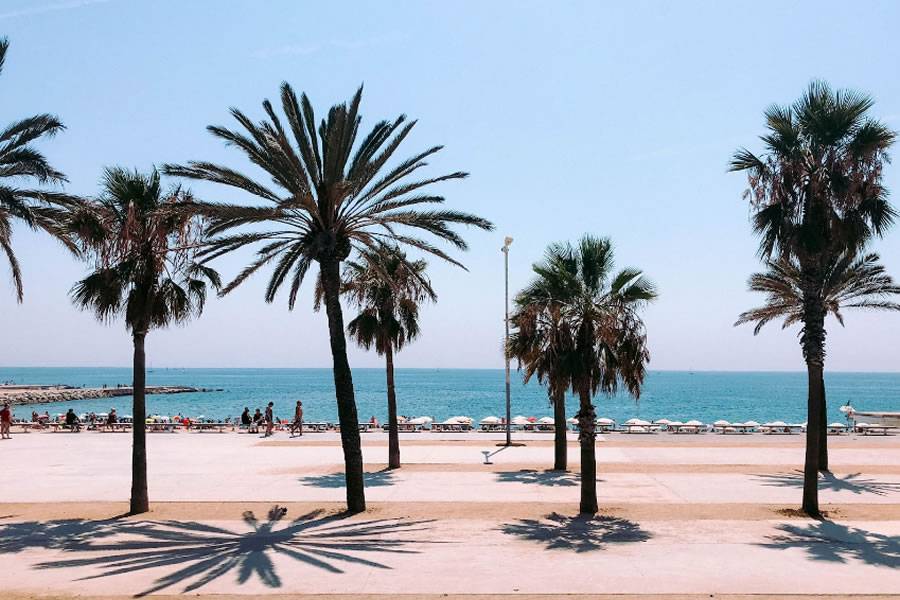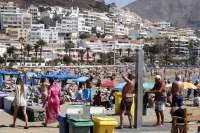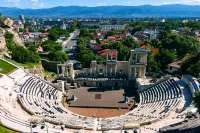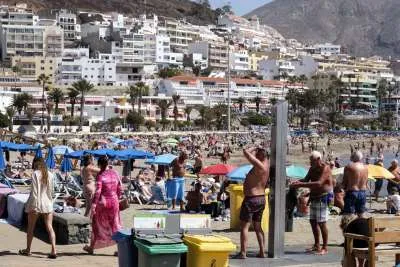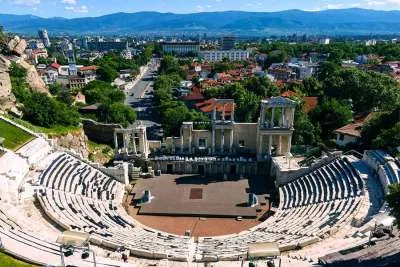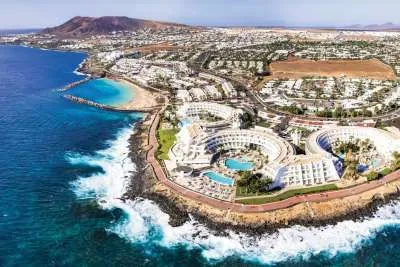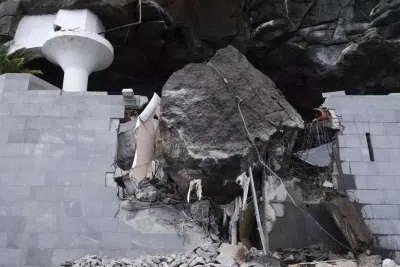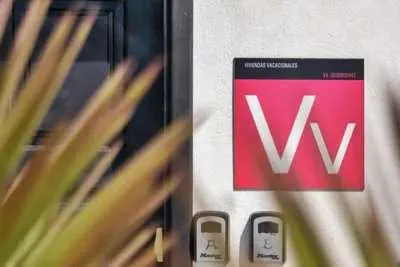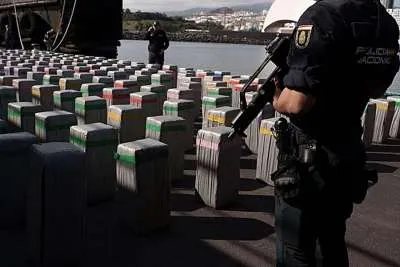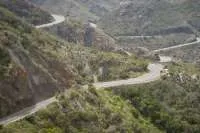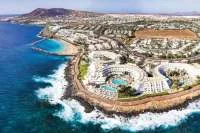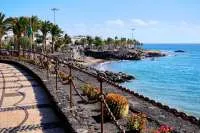Top 20 best places to visit in Barcelona
- 24-11-2023
- Travel
- Canarian Weekly
Discover the top 20 must-visit places in Barcelona that will make your trip unforgettable. From iconic landmarks to hidden gems, our guide covers it all, ensuring your journey, even if you snag cheap flights to Barcelona, is nothing short of luxurious.
Barcelona, a city where culture, art, and history converge, offers a tapestry of experiences for every traveller. While finding cheap business class flights to Barcelona might be a stroke of luck, choosing the best places to visit in this vibrant city requires a little more insight.
Here are the top 20 spots that should be on your Barcelona itinerary:
1 La Sagrada Família - Antoni Gaudí's Masterpiece
La Sagrada Família, a monumental basilica in Barcelona, is a masterpiece of architectural innovation and religious symbolism. Conceived by the visionary architect Antoni Gaudí, its construction began in 1882 and continues to this day, reflecting an evolving fusion of Gothic and Art Nouveau styles.
The structure's intricate facades and towering spires, inspired by nature and Christian iconography, captivate observers. Its interior, bathed in vibrant light from stained glass windows, showcases organic shapes and rich textures. La Sagrada Família, more than a building, is a testament to the enduring interplay of faith, art, and the human spirit.
2 Park Güell - A Gaudí-Designed Wonderland
Park Güell in Barcelona, is a whimsical and colorful public park designed by the renowned architect Antoni Gaudí. Created between 1900 and 1914, it is an enchanting showcase of Gaudí's unique style, blending organic forms with Art Nouveau and Catalan Modernism.
The park features undulating stone structures, imaginative mosaics, and fantastical buildings that seem to spring from fairy tales. Its main terrace, bordered by a long, serpentine bench covered in vibrant tile shards, offers panoramic views of the city. Park Güell is a celebration of nature and architecture, inviting visitors into a dreamlike, surreal landscape.
3 La Rambla - Barcelona's Bustling Boulevard
La Rambla is a bustling, tree-lined boulevard slicing through the heart of Barcelona, Spain. Stretching 1.2 kilometres from Plaça de Catalunya to the Christopher Columbus Monument at Port Vell, this lively street is a mosaic of Barcelona's vibrant culture. It's famed for its street performers, outdoor cafés, and colourful markets, like La Boqueria, offering a taste of local life.
La Rambla is also a hub for historic attractions, including the Liceu Theatre and the Palau Güell. By day or night, it's a bustling artery of the city, offering a unique blend of tourist charm and authentic Catalan spirit.
4 Gothic Quarter - A Walk Through History
The Gothic Quarter, or Barri Gòtic, is the historical heart of Barcelona, Spain, characterized by narrow, winding cobblestone streets and impressive medieval architecture. This ancient part of the city dates back to Roman times, evidenced by remnants of the Roman wall.
The quarter brims with Gothic buildings, notably the stunning Barcelona Cathedral, with its intricate façades and soaring spires. Charming plazas like Plaça del Rei and Plaça Sant Jaume are vibrant gathering spots, bustling with cafes and street performers. The Gothic Quarter is a blend of history and modernity, inviting exploration and discovery in its shadowy lanes and hidden corners.
5 Casa Batlló - Gaudí's Architectural Gem
Casa Batlló, located in the heart of Barcelona, is a stunning example of the imaginative work of architect Antoni Gaudí. This building, part of the "Apple of Discord" block, showcases Gaudí's unique approach to Modernisme (Catalan Art Nouveau).
Completed in 1904, the structure is distinguished by its vivid, colorful façade adorned with a mosaic made of broken ceramic tiles, and its undulating, dragon-back shaped roof. The building's facade, evoking the legend of Saint George slaying the dragon, is a visual feast, while the interior features whimsical shapes, light-filled spaces, and innovative architectural details, all signature elements of Gaudí's groundbreaking style.
6 Camp Nou - A Mecca for Football Fans
Camp Nou, the iconic football stadium in Barcelona, is the largest stadium in Europe and the home ground of FC Barcelona since its opening in 1957. With a seating capacity of over 99,000, it's a temple for football enthusiasts. The stadium's sheer size and electric atmosphere on match days are awe-inspiring, creating an unforgettable experience for fans.
Beyond hosting thrilling football matches, including numerous international fixtures, Camp Nou is a symbol of Catalan pride and sporting excellence. It features a museum showcasing the rich history and achievements of FC Barcelona, making it a must-visit for any sports fan.
7 Montjuïc - A Hill with a View
Montjuïc, a prominent hill in Barcelona, offers panoramic views of the city and harbour. Its name, meaning "Jewish Mountain" in medieval Catalan, hints at its historical significance. Montjuïc is renowned for its lush gardens, Olympic facilities from the 1992 games, and cultural attractions, including the Palau Nacional, home to the National Art Museum of Catalonia.
The hill is also famous for the Magic Fountain, which presents spectacular light and water shows. Additionally, it hosts the 17th-century Montjuïc Castle, a former military fortress with a rich history, now serving as a viewpoint and cultural space. Montjuïc is a blend of natural beauty, history, and culture, offering a serene escape within the bustling city.
8 Picasso Museum - An Artistic Tribute
The Picasso Museum in Barcelona, is a tribute to the influential Spanish painter Pablo Picasso. Housed in five adjoining medieval palaces in the La Ribera neighborhood, the museum boasts one of the most extensive collections of Picasso's works, focusing particularly on his formative years. With over 4,000 pieces, the museum provides insights into the artist's creative evolution, showcasing his deep connection to Barcelona, where he spent his early years.
Notable for its comprehensive collection of Picasso's early sketches, ceramics, and paintings, the museum offers a unique journey through the artist's developmental stages and his enduring impact on modern art.
9 Barceloneta Beach - Sun, Sea, and Sand
Barceloneta Beach, located in the heart of Barcelona, Spain, is a popular urban beach stretching along the Mediterranean coast. Known for its golden sands and lively atmosphere, it's a favourite spot for both locals and tourists. The beach is lined with a bustling promenade, famous for its seafood restaurants, beach bars, and vibrant nightlife.
The area is also known for its picturesque fishermen's houses and cultural landmarks like the modern W Hotel. Barceloneta Beach is not just a place to sunbathe and swim; it's a vibrant community hub where visitors can immerse themselves in Barcelona's dynamic coastal culture.
10 La Boqueria Market - A Food Lover's Paradise
La Boqueria Market, officially known as Mercat de Sant Josep de la Boqueria, is a bustling culinary landmark in the heart of Barcelona, on the famous La Rambla. This vibrant market is a sensory feast, overflowing with fresh fruits, vegetables, meats, seafood, and an array of local and international delicacies.
Dating back to the 13th century, La Boqueria is as much a historic site as it is a food paradise. Its colourful stalls, lively atmosphere, and diverse offerings attract both locals and tourists alike, making it a must-visit destination for anyone eager to experience the authentic flavours and culture of Barcelona.
11 Palau de la Música Catalana - An Architectural Concert Hall
The Palau de la Música Catalana in Barcelona, Spain, is an architectural jewel of Catalan Modernisme. Designed by Lluís Domènech i Montaner and inaugurated in 1908, this concert hall is renowned for its stunning interior, characterized by intricate mosaics, stained glass, and ornate sculptures. The centrepiece is the lavish concert hall, crowned with a magnificent stained-glass skylight that floods the space with natural light, creating an ethereal atmosphere.
As a UNESCO World Heritage site, the Palau is not only a venue for world-class musical performances but also a testament to the artistic creativity and cultural heritage of Catalonia. Its unique design and acoustics make it an iconic symbol of Barcelona's artistic legacy.
12 Casa Milà (La Pedrera) - like modernist masterpiece
Casa Milà, commonly known as La Pedrera, is a modernist masterpiece located in Barcelona, Spain, designed by the renowned architect Antoni Gaudí. Completed in 1912, this architectural marvel is celebrated for its unique design and is a UNESCO World Heritage Site. The building's façade is a wave-like stone structure, devoid of straight lines, creating an impression of a petrified quarry, hence its nickname "La Pedrera," meaning "the stone quarry." Its wrought iron balconies, designed by Josep Maria Jujol, add to its distinctive appearance.
Internally, the building is equally impressive. The attic, with its series of catenary arches, is a testament to Gaudí's genius in structural engineering. The roof terrace is another highlight, featuring whimsical chimneys and ventilation towers that resemble sculptures more than functional elements. Each element of Casa Milà exhibits Gaudí's organic design philosophy, where nature-inspired forms blend seamlessly with innovative architectural techniques.
Casa Milà was not only an architectural achievement but also a social statement. It was commissioned by Pere Milà and his wife Roser Segimon as a residence and an apartment building, reflecting the social and cultural changes in early 20th century Barcelona. Today, it stands as a cultural centre, hosting exhibitions and events, and is a significant attraction for those interested in modernist architecture and the works of Gaudí.
13 Plaça de Catalunya - The Heart of Barcelona
Plaça de Catalunya is a large, bustling square in the heart of Barcelona, known as the city's central hub where many important streets converge, including La Rambla and Passeig de Gràcia. Spanning about 30,000 square meters, it's a key transit point and a popular meeting spot for locals and tourists alike. The plaza is adorned with fountains, statues, and green spaces, adding a touch of beauty to this urban gathering place.
Surrounded by shops, cafes, and architectural landmarks, Plaça de Catalunya is not just a transportation nexus but also a cultural and commercial epicentre, embodying the vibrant and dynamic spirit of Barcelona.
14 El Raval - Barcelona's Edgy Side
El Raval is a diverse and dynamic neighbourhood in Barcelona, known for its rich multicultural tapestry and vibrant street life. Once a medieval suburb, it has transformed into a bustling urban area with a blend of historic sites and contemporary culture. El Raval is home to a mix of art galleries, unique shops, and ethnic restaurants, reflecting its cosmopolitan character.
The neighbourhood also houses notable landmarks like the Barcelona Museum of Contemporary Art (MACBA) and the historic Hospital de la Santa Creu. El Raval's narrow streets and lively squares, like the Rambla del Raval, offer an authentic glimpse into Barcelona's urban heartbeat.
15 Poble Espanyol - Spain in Miniature
Poble Espanyol, located on Montjuïc Hill in Barcelona, Spain, is an open-air architectural museum, offering a unique exploration of Spain's diverse regional architecture and culture. Built for the 1929 Barcelona International Exposition, it encompasses replicas of streets, squares, and buildings from various parts of Spain. The complex showcases a variety of architectural styles, from Andalusian courtyards to Catalan Romanesque monasteries.
Along with its architectural display, Poble Espanyol hosts craft shops, traditional restaurants, and live workshops, providing a rich cultural experience. It's a miniature Spain, encapsulating the country's architectural heritage and vibrant cultural tapestry within a single space.
16 Tibidabo - A Hilltop Amusement Park
Tibidabo is a mountain overlooking Barcelona, Spain, renowned for its stunning panoramic views of the city and the Mediterranean Sea. At 512 meters high, it's the tallest peak in the Serra de Collserola range. Tibidabo is famous for its amusement park, one of the oldest in the world, offering a delightful blend of vintage and modern rides, and its charming atmosphere is a favourite among families.
The mountain is also home to the Sagrat Cor Church, a striking temple that crowns its summit. The combination of natural beauty, recreational activities, and cultural landmarks makes Tibidabo a captivating destination for visitors of all ages.
17 Santa Maria del Mar - A Gothic Architectural Jewel
Santa Maria del Mar is an exquisite example of Catalan Gothic architecture, located in the La Ribera district of Barcelona, Spain. Built between the 14th and 15th centuries, this basilica is celebrated for its elegant and austere Gothic structure. Known as the "Cathedral of the Sea," it was constructed by and for the people of Barcelona's thriving maritime and mercantile district.
The church features a stunning interior with soaring columns and magnificent stained-glass windows, creating a spacious, light-filled ambiance. Santa Maria del Mar is not only a place of worship but also a symbol of the historical and artistic heritage of Barcelona, embodying the spirit and resilience of its people.
18 Palau Güell - A Gaudí-Designed Mansion
Palau Güell is a striking architectural masterpiece in Barcelona, designed by the renowned Catalan architect Antoni Gaudí. Commissioned by the industrial tycoon Eusebi Güell, it was built between 1886 and 1890. This early work of Gaudí showcases his unique approach to Modernisme (Catalan Art Nouveau), blending Gothic and Moorish influences.
The palace is noted for its innovative use of space, light, and materials. Its standout features include whimsical rooftop chimneys and a spectacular central hall designed for high society events. Palau Güell, a UNESCO World Heritage site, is a testament to Gaudí's visionary genius and an integral part of Barcelona's architectural heritage.
19 Gràcia - A Trendy Neighbourhood
Gràcia, a charming neighbourhood in Barcelona, is known for its bohemian spirit and vibrant community life. Originally an independent town, Gràcia was incorporated into Barcelona in the late 19th century, yet it retains a distinct, village-like atmosphere.
This area is celebrated for its bustling squares, such as Plaça del Sol and Plaça de la Vila de Gràcia, lined with cafes, bars, and independent shops. Gràcia's narrow streets are filled with art studios, organic markets, and international cuisine. The neighbourhood is especially famous for its annual Festa Major, a street festival where residents lavishly decorate their streets, showcasing Gràcia's creativity and strong community bonds.
20 Fundació Joan Miró - Celebrating Miró's Legacy
The Fundació Joan Miró, located in Barcelona's Montjuïc area, is a museum dedicated to the life and work of the Catalan artist Joan Miró. Established in 1975, it houses the most extensive collection of Miró's artworks, including paintings, sculptures, and textiles.
The museum, designed by architect Josep Lluís Sert, reflects Miró's artistic vision, emphasizing natural light and open space. Besides showcasing Miró's works, the foundation actively promotes contemporary art through temporary exhibitions and educational programs. The Fundació Joan Miró is not only a tribute to Miró's legacy but also a dynamic cultural centre, fostering artistic innovation and exploration.
In conclusion, Barcelona is a city that captivates with its blend of historic charm and modern vibrancy. Whether you're wandering through its Gothic lanes, marvelling at Gaudí's architectural masterpieces, enjoying its lively beaches, or indulging in its world-class cuisine, Barcelona promises an unforgettable experience.


